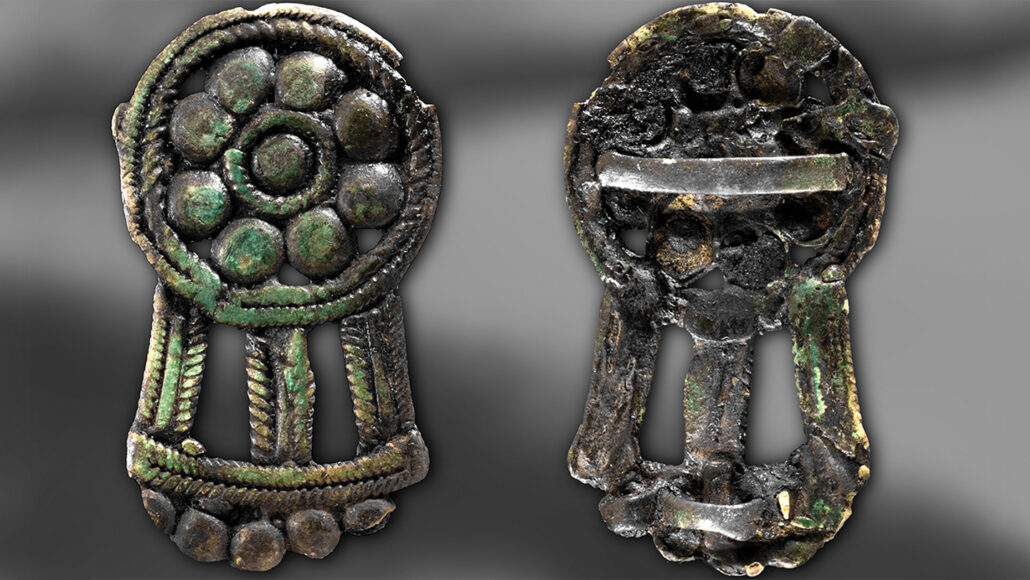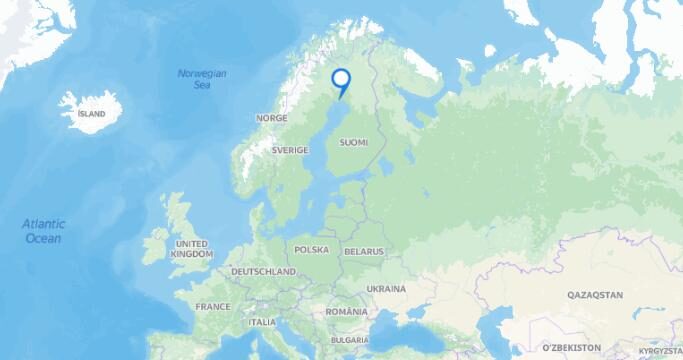
Excavations in what's now northeastern Sweden uncovered ancient furnaces and fire pits that hunter-gatherers used for metalworking. A mobile lifestyle did not prevent hardy groups based in or near the Arctic Circle from organizing large-scale efforts to produce iron and craft metal objects, say archaeologist Carina Bennerhag of Luleå University of Technology in Sweden and colleagues. In fact, hunter-gatherers who moved for part of the year across cold, forested regions dotted with lakes and swampy patches apparently exchanged resources and knowledge related to metallurgy, the extraction of metals from ores, the researchers report in the December Antiquity.
Ancient hunter-gatherers at two Swedish sites "probably manufactured more iron and steel, and were more socially organized and sedentary than we previously thought," says Luleå archaeologist and coauthor Kristina Söderholm.
Groups must have settled down for substantial amounts of time at locations near crucial resources, such as ores for prospecting, wood needed to make charcoal and clay and stone required for building furnaces and fire pits used in iron production, the scientists say.
Comment: What about trade?
Many investigators regard ironworking as an invention of large agricultural societies in southwest Asia more than 3,000 years ago (SN: 8/22/13). From there, this technology has typically been thought to have spread elsewhere, eventually being adopted in simplified forms by people in northern Scandinavia and other Arctic areas between A.D. 700 and 1600.
But that view has been questioned in recent years. Increasing evidence indicates that ancient technologies, including metallurgy, were mastered relatively early by small-scale societies, says archaeological scientist Marcos Martinón-Torres of the University of Cambridge, who was not part of Bennerhag's team.
"This study is particularly insightful because the metal is iron, typically considered a more challenging metallurgy than copper or gold; the makers are hunter-gatherers, historically assumed to use only basic technologies; and the location is in a region largely ignored in histories of technology," he says.
Bennerhag first directed excavations at a site called Sangis. Investigators uncovered a rectangular iron-smelting furnace consisting of a frame of stone slabs with one open side. A clay shaft was built within and partly on the frame. Holes in the frame served as inlets for air blown on burning charcoal inside, probably by bellows placed on flat stones, the researchers say.
By-products of heating iron ore at high temperatures and remnants of a ceramic wall lining were found inside the furnace. Radiocarbon dating of furnace remains indicate that iron production occurred between around 200 and 50 B.C.
Areas that hunter-gatherers occupied about 500 meters from the furnace contained pottery fragments and other material dating to between around 500 B.C. and A.D. 900. Finds include numerous fish bones and at least three fire pits where iron from the furnace was reheated and refined. There, researchers found several iron items and others made of steel, a bronze buckle and metallic waste with copper droplets on the surface, suggesting that different metals were produced at Sangis.
The bronze buckle's molding technique and decorative style resemble metal items found at hunter-gatherer sites in northwestern Russia dating to as early as around 2,300 years ago, the researchers say. Knives and other metal objects found at Sangis contained two or more layers that had been expertly welded together and, in some cases, exposed to either of two types of heating processes to enhance their strength.
Excavations at a second site, Vivungi, uncovered the remains of two iron-smelting furnaces that contained iron ore, by-products of iron production and shards of ceramic wall lining. Iron production at Vivungi started around 100 B.C., the scientists say. Vivungi yielded no evidence of fire pits where iron was further purified.
Radiocarbon dating of animal bones found near the Vivungi furnaces indicates that hunter-gatherers repeatedly occupied this location from around 5300 B.C. to A.D. 1600.
Evidence of iron production in southern Scandinavia more than 2,000 years ago already existed. So discoveries of similarly old ironwork farther north make sense, says archaeometallurgist Thilo Rehren of the Cyprus Institute in Nicosia, who did not participate in the new study. Preliminary work indicates that iron production also began in East Asia more than 2,000 years ago, Rehren adds.
Citations C. Bennerhag et al. Hunter-gatherer metallurgy in the Early Iron Age of Northern Fennoscandia. Antiquity. Vol. 95, December 2021, p. 1511. doi: 10.15184/aqy.2020.248.




Comment: See also:
- Barbegal water mills: Unique hydraulics of 'world's earliest known industrial plant' revealed
- Brochs: Scotland's enigmatic Iron Age circular stone structures
- Bronze Age Britons were riddled with parasites but had the finest of fabrics
- Crannogs: Neolithic artificial islands in Scotland stump archeologists
And check out SOTT radio's: MindMatters: America Before: Comets, Catastrophes, Mounds and Mythology